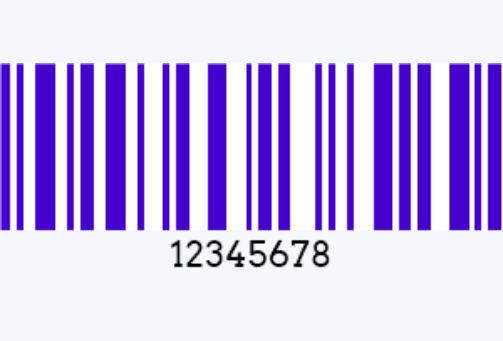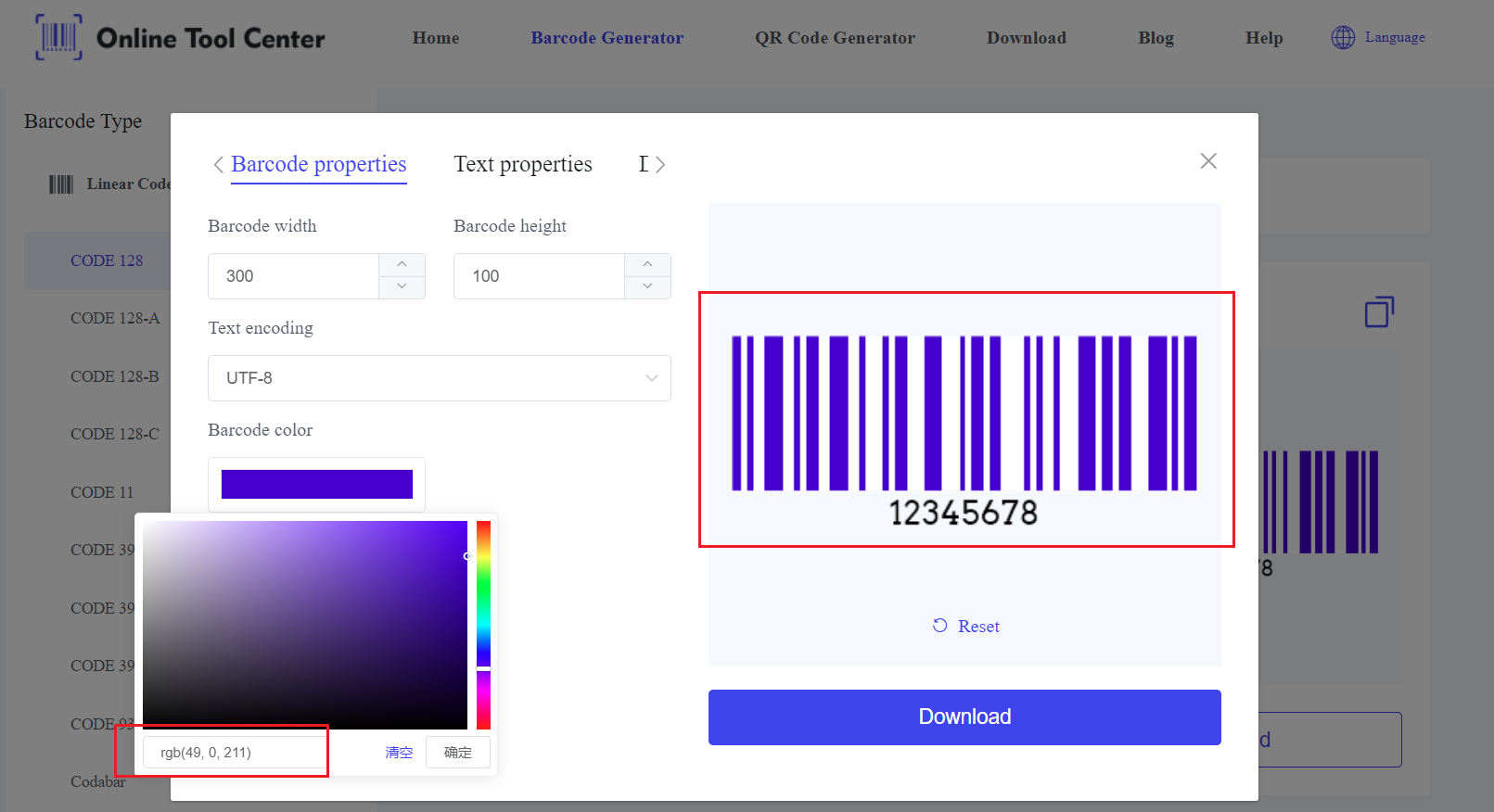Barcodes are fundamental to modern business, playing a critical role in product identification, inventory management, and retail transactions.
Traditionally monochrome, barcodes are now evolving with the introduction of colored variants like blue barcodes.
These colored barcodes not only serve their functional purposes but also add a layer of visual appeal, aligning with brand aesthetics and enhancing marketing efforts.
With advances in technology, creating and customizing blue barcodes has become easier and more accessible, even for small businesses, thanks to a free online barcode generator.
What Are Blue Barcodes?
Blue barcodes are simply traditional barcodes that have been customized with a blue color scheme. These barcodes maintain all the functional characteristics of standard black barcodes but offer additional visual appeal.
They can be used across various industries, from retail to luxury goods, where branding and design consistency are paramount.
The use of blue barcodes is particularly effective in creating a distinct visual identity, setting products apart in a competitive market.

Benefits of Using Blue Barcodes
1. Enhanced Branding
Integrating blue barcodes into your packaging and marketing materials allows for a seamless extension of your brand's visual identity.
By aligning the barcode color with your brand's color palette, you reinforce brand recognition and create a cohesive look across all customer touchpoints.
2. Improved Visual Appeal
The introduction of color, such as blue, into barcodes significantly enhances their visual appeal.
Blue barcodes can make products more eye-catching, especially in retail environments where shelf competition is fierce.
How to Create Blue Barcodes?
1. Selecting the Right Barcode Type
Choosing the correct barcode type is the first step in creating a blue barcode. Consider the following factors:
● Data Capacity: Different barcode types have varying capacities for storing information. QR codes, for example, can encode a large amount of data and are suitable for applications requiring detailed information, such as URLs or product details.
● Scanning Environment: The environment where the barcode will be scanned (e.g., indoor retail, outdoor logistics) affects its readability. High-contrast colors are critical in environments with poor lighting.
● Compatibility with Color Customization: Ensure that the barcode type you select can be rendered in blue without losing its scannability. Test different shades of blue to find the optimal contrast.
2. Using Free Online Barcode Generators
● Choose a Reliable Barcode Generator: Access a free online barcode creator.
● Select the Barcode Format: Based on your needs, choose the appropriate barcode type (e.g., QR code for marketing, UPC for retail).
● Customize the Color: Use the tool's color picker to select a shade of blue. Ensure the contrast is high enough for the barcode to be easily read by scanners.

● Download: Once satisfied with the customization, download it for use in your designs.
3. Customizing and Printing Your Blue Barcode
To ensure your blue barcode is both visually appealing and functional, consider the following:
● Contrast and Visibility: The barcode must have sufficient contrast against its background to be scannable. A dark blue barcode on a light background usually works best.
● Printing Method: Choose the right printing technology for your needs. Thermal printing is ideal for durable, long-lasting labels, while laser printing provides high-definition output suitable for premium packaging.
● Material and Finish: The label material and finish also affect the barcode's readability.
Matte finishes are generally preferred as they minimize glare, while gloss finishes can make the blue color pop more but might require additional testing to ensure scannability.
Implementing Blue Barcodes in Your Business Operations
1. Integrating Barcodes into Inventory Systems
Incorporating blue barcodes into your inventory management system requires careful consideration.
Ensure that your existing barcode scanners are compatible with colored barcodes. It's advisable to conduct comprehensive testing in different lighting environments to guarantee scanning accuracy.
2. Using Blue Barcodes in Retail
In a retail setting, blue barcodes can be a powerful tool for product packaging and in-store displays.
By matching the barcode color to your brand's color scheme, you can create a more unified and professional look.
Additionally, consider using blue barcodes in promotional materials such as loyalty cards or special offers to enhance customer engagement.
3. Blue Barcodes in Digital Marketing
In digital marketing, blue QR codes are particularly effective. They can be featured on your website, social media channels, and email campaigns to drive traffic and engage customers.
For instance, a blue QR code on a promotional flyer can link to a special discount page, adding an interactive element to your marketing efforts.
Best Practices for Blue Barcode Usage
1. Ensuring Scannability
Maintaining the scannability of a blue barcode requires careful attention to detail. The contrast between the barcode and the background should be high, and the shade of blue chosen should be dark enough to be recognized by barcode scanners.
Avoid using light blues that may blend into the background or cause readability issues.
2. Regular Testing and Verification
Before fully implementing blue barcodes, regular testing is crucial.
Use barcode verification tools to check the accuracy of scans across different devices and in various environments.
FAQs
1. What are the common uses for blue barcodes?
Blue barcodes are often used in branding, marketing, and retail packaging to create a cohesive visual identity and attract customer attention.
2. Can barcodes be blue?
Yes, barcodes can be blue, as long as the color contrast is sufficient for accurate scanning.
3. What is the best color for barcodes?
While black is the most common color due to its high contrast, blue and other colors can be effective if used correctly with appropriate contrast.
To sum up, blue barcodes provide a unique opportunity to enhance both the aesthetic and functional aspects of your products.
By integrating them into your branding strategy and following best practices for design and implementation, you can create visually appealing, highly functional barcodes that set your products apart.
Using a free online barcode generator, you can easily experiment with blue barcodes to find the best fit for your business needs.





